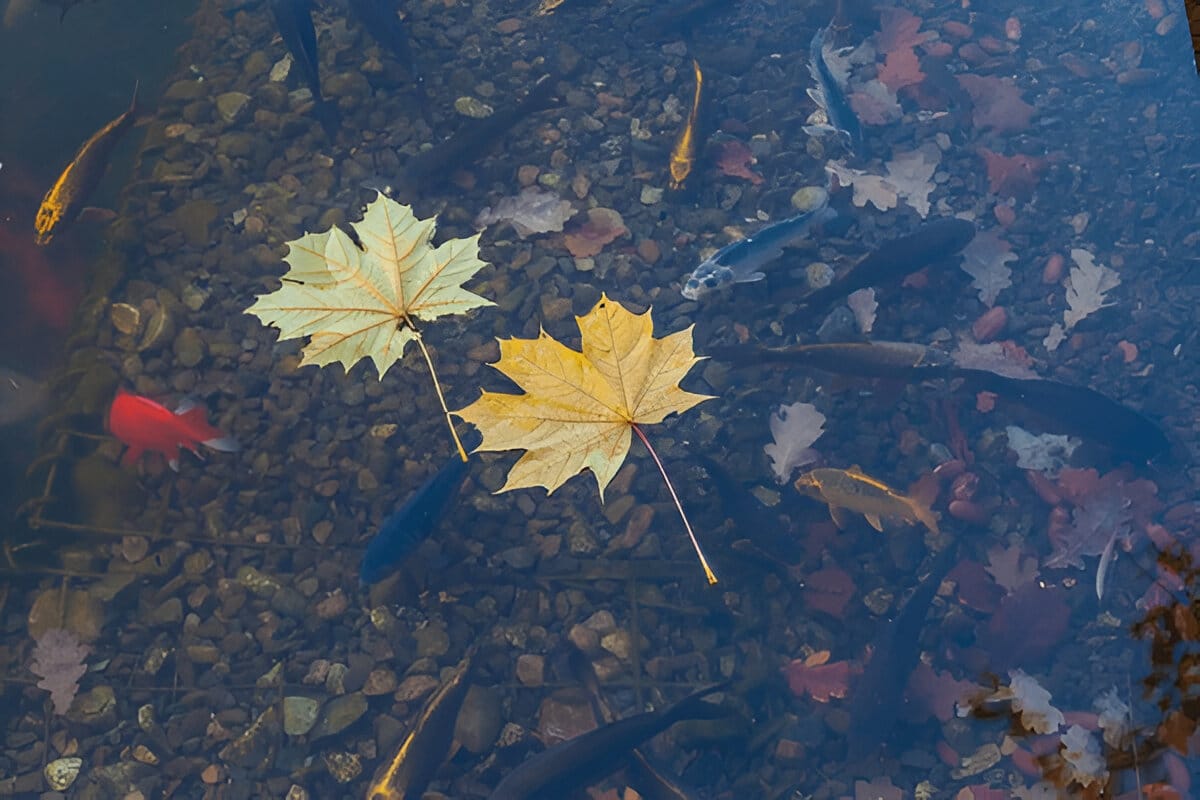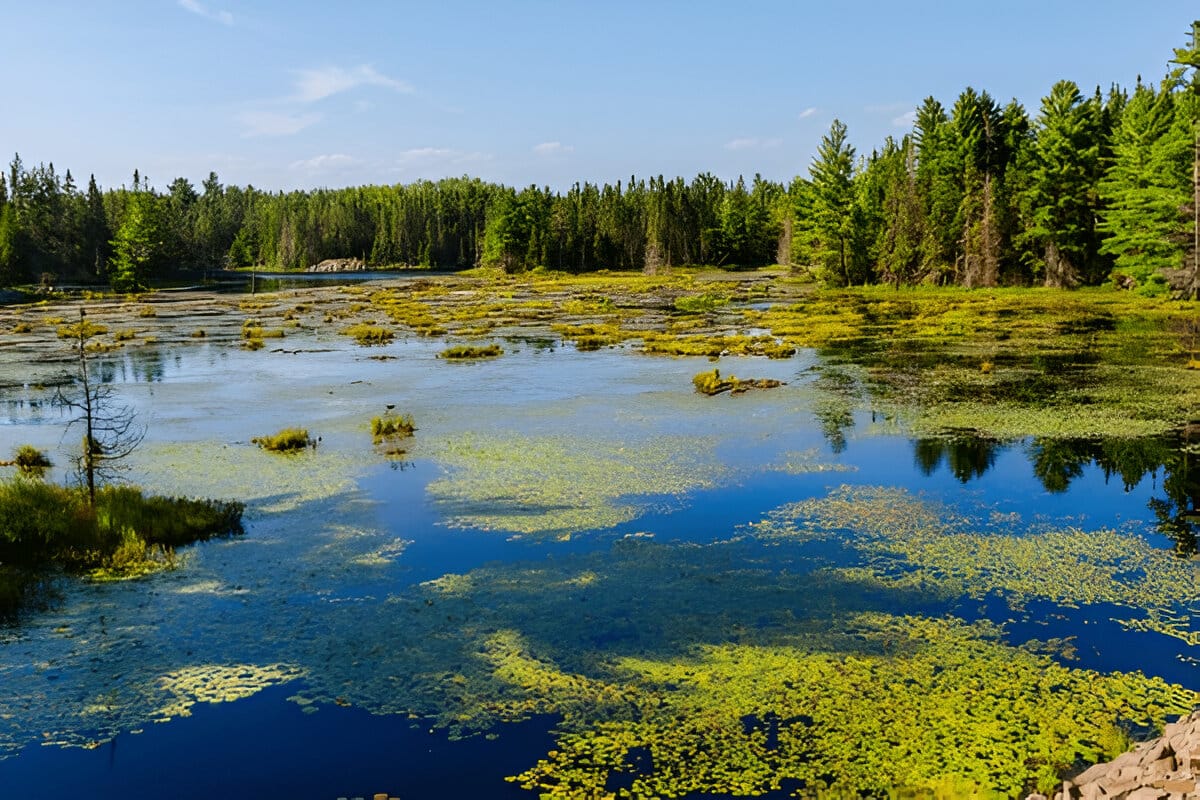
Top Fish Species for Your Pond: Choosing the Right One
Choosing the right fish for your pond is more than just picking the ones you like. Each species has different needs, and your pond has
If your pond water has turned green or is starting to develop stringy mats on the surface, you’re likely dealing with algae. For Canadian pond owners, algae in pond water is a common seasonal struggle. It not only makes your pond look unsightly, but it can also throw off the balance of your entire ecosystem, especially if you’re trying to protect fish and aquatic life.
So, how do you get rid of pond algae without harming fish? Let’s break it down step by step with safe, effective methods trusted by pond professionals across Canada, including the experts at Pond Perfections.
Algae thrive in still or slow-moving water that’s rich in nutrients like nitrogen and phosphorus. These nutrients often come from things like fish waste, decomposing leaves, fertilizer runoff, and warm weather with lots of sunlight. When these conditions line up, algae can take over quickly, turning your clean pond water into a green pond water problem.
Not all algae are harmful. They can be beneficial in small amounts, helping oxygenate the water and feeding small aquatic organisms. But when algae start to bloom and cover the pond, it can block sunlight, reduce oxygen, and harm fish and plants.
There are a few types of pond algae you might run into. Green water algae make the whole pond look murky. String algae form long strands that float on the surface or cling to rocks. Blue-green algae, or cyanobacteria, are more serious and can be toxic to both fish and people.
One of the most effective ways to handle algae is to prevent it in the first place.
Shading your pond helps limit how much sunlight gets into the water, which slows algae growth. You can use floating plants like lilies or a pond dye. True Blue Pond Dye by Pond Perfections is made specifically for Canadian ponds and is safe for fish and wildlife. It gives the water a rich color while helping reduce algae at the same time.
Another tip is to reduce the nutrients in the water. Remove leaves and debris before they break down. Organic matter sitting at the bottom of your pond feeds algae, so keeping it clean helps in the long run. It also helps to feed your fish only what they need. Too much food turns into waste, which fuels algae growth.
Explore Our Pond Dyes
Algae love still water. Installing a pond aerator or fountain is one of the best ways to prevent algae buildup. Aeration keeps water circulating, which increases oxygen and creates conditions that algae don’t like.
Many Canadian pond owners rely on surface aerators and Ice Eaters from Pond Perfections to improve water quality and keep ponds clear in both summer and winter. Better oxygen levels help fish stay healthy and give beneficial bacteria what they need to thrive.
Check out Pond Aeration Systems
Adding beneficial bacteria is a natural way to clean up the pond. These good microbes break down organic waste, reduce nutrients, and slow algae growth over time. It’s like having tiny pond cleaners working for you.
Look for products that are labeled as safe for fish and wildlife. Using bacteria consistently during warmer months builds up a healthy population that helps you stay ahead of algae blooms.
If your pond is already full of algae, consider using a pond algae remover. But not all products are created equal. Some chemicals work fast but can be dangerous for fish and plants.
If you go this route, ensure you’re using an algae killer approved for pond use and labeled as fish-safe. Pond Perfections carries effective algae control products that, when used properly, won’t disrupt your pond’s ecosystem. Always follow the directions on the label and treat the water carefully, especially in smaller or shallow ponds.
If you see mats of string algae or thick patches, scoop them out with a pond weed roller. Physical removal might not solve the entire problem, but it helps reduce the algae load and makes other treatments more effective.
This kind of maintenance is simple, affordable, and helps restore water clarity without stressing your fish.
Getting rid of algae without harming fish requires careful planning. Don’t drain the pond unless necessary. It shocks the fish and often leads to more problems once you refill it. Avoid using heavy doses of chemicals all at once. Killing too much algae too quickly can cause oxygen levels to drop, which can be deadly for fish. Also, don’t guess at what’s wrong—test your water for pH, nutrient levels, and oxygen regularly.
Q: How do I get rid of algae in a pond without killing the fish?
Use safe treatments like beneficial bacteria, add aeration, and shade the pond with dyes or plants. Avoid harsh chemicals and remove algae manually when possible.
Q: What causes a green pond?
Excess nutrients, sunlight, and stagnant water can all lead to algae blooms and green water.
Q: Is pond algae dangerous for fish?
Some algae are harmless, but large blooms can reduce oxygen levels and harm fish.
You don’t need harsh chemicals to get rid of algae in your pond. A gentle, consistent approach works better and keeps your fish safe. Algae prevention in ponds starts with good maintenance and smart water management.
Block excess sunlight, use aeration, clean out organic debris, introduce beneficial bacteria, and treat problems early with safe products. Combine these steps, and you’ll not only get rid of algae but also build a healthier pond with better water quality year-round.
If you’re struggling with green pond water or need help choosing the right algae treatment, Pond Perfections is here to support you. From aeration systems to pond-safe dyes and bacteria treatments, we offer everything you need to enjoy a clear, vibrant pond without harming the fish you love.

Choosing the right fish for your pond is more than just picking the ones you like. Each species has different needs, and your pond has

Invasive aquatic weeds are plants that don’t belong in Canadian lakes and ponds. These weeds grow fast, taking over the water and harming native plants

If your backyard pond in Canada is turning green or developing stringy messes on the surface, algae is likely the reason. Algae blooms are common,

Accidentally, when you looked at your pond and thought, “Why does the water look so off lately?” Maybe it’s starting to turn murky, algae are

Pond dye is a widely used tool for improving the appearance and health of ponds, but is it safe? This article dives into the safety